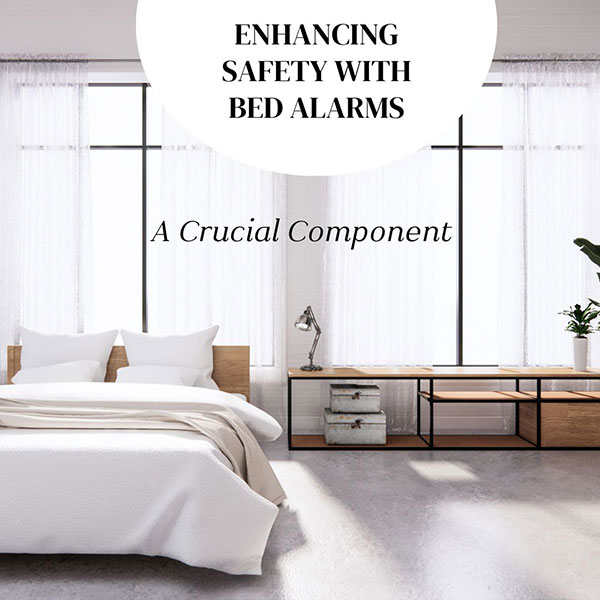It is critical to prioritize the safety of individuals within healthcare environments, especially those experiencing mobility challenges or cognitive impairments. Bed alarms are essential in achieving this objective, providing caregivers and loved ones with an extra layer of security and peace of mind. These devices offer timely alerts when patients attempt to leave bed, aiding in fall prevention and patient safety.
How They Work
These devices function based on a straightforward yet efficient principle: they identify alterations in pressure or movement occurring on the bed’s surface. Typically, these alarms consist of a sensor pad placed beneath the patient, connected to a monitoring unit via a cord. When pressure is removed from the pad, such as when a patient attempts to leave the bed unassisted, the alarm is triggered, emitting a sound or signal to alert caregivers.
Preventing Falls and Injuries
One of the primary benefits of these devices is their role in fall prevention, particularly in aged care or for those with mobility issues or who are prone to wandering due to dementia or other cognitive impairments. Attempting to leave the bed without assistance can result in serious injuries. These devices act as a proactive measure, alerting caregivers when a patient starts to move, allowing for timely intervention and support.
Promoting Independence and Dignity
Promoting independence and dignity is crucial in healthcare settings for fall prevention and upholding patients’ autonomy and self-respect. Instead of relying on physical restraints, which can feel confining and diminish dignity, bed alarms offer a compassionate alternative for managing safety. By promptly alerting caregivers, these alarms enable timely assistance for patients while respecting their freedom to move comfortably within their beds. This approach prioritizes safety and preserving patients’ dignity, fostering a more compassionate and respectful care environment.
Versatility in Application
Bed alarms from various suppliers, such as those available at https://www.safetyandmobility.com.au/shop/category/bed-alarms, are highly versatile and can be tailored to multiple care settings and patient needs. They come in different configurations, including wireless options, for added convenience and flexibility. Additionally, some models feature adjustable sensitivity settings, allowing caregivers to customize the alarm threshold according to individual patient requirements. This adaptability ensures these devices integrate seamlessly into diverse healthcare environments while effectively addressing each patient’s needs.
Integration with Care Management Systems
In modern healthcare environments, integration is critical to optimizing efficiency and enhancing patient care. These devices are designed to integrate with existing care management systems, enabling caregivers to monitor multiple patients simultaneously. This integration streamlines workflow, ensuring alerts are promptly addressed and documented as part of the patient’s care plan.
Peace of Mind for Caregivers and Loved Ones
Caring for individuals with mobility or cognitive challenges can be emotionally taxing for caregivers and loved ones. These provide reassurance by serving as an extra set of eyes and ears, even during periods when direct supervision may not be possible. This peace of mind allows caregivers to attend to other responsibilities without compromising the safety of their patients.
Compliance with Regulations and Standards
Adherence to regulations and standards is non-negotiable in healthcare. These are crucial in ensuring compliance with safety guidelines to prevent patient falls and injuries. Facilities that implement bed alarms demonstrate their commitment to providing quality care while mitigating the risk of liability associated with preventable accidents.
Bed alarms represent a fundamental component of safety management in healthcare settings, offering numerous benefits for patients and caregivers. From fall prevention to promoting independence and dignity, these devices contribute to a safer and more supportive care environment. By leveraging technology to enhance patient safety, these devices provide invaluable peace of mind for all stakeholders involved in the care process.







Speak Your Mind